Greenhouse Sizes In Kenya
Greenhouse sizes in Kenya range from smal units of 120M sq, to large commercial structures spanning dozens of acreage. The most common greenhouse size in Kenya are tabulated below
Greenhouse Sizes In Kenya
A. Small
| Dimensions in meters | Tomato Crop Population | Price in KES |
| 15 x 8 | 600 | KES 195,000 |
| 24 x 8 | 800 | KES 275,000 |
| 30 x 8 | 1,200 | KES 365,000 |
| 40 x 8 | 1,500 | KES 530,000 |
| 48 x 8 | 1,600 | KES 600,000 |
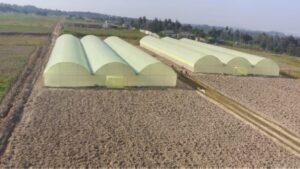
2,880M sq of greenhouses contructed for a medium scale farmer in Heni area, nyandarua county. The target crop is herbs and spices
B. Medium
| Dimensions in meters | Tomato Crop Population | Price in KES |
| 24 x 16 | 1,500 – 1,600 | KES 540,000 |
| 30 x 16 | 2,400 | KES 660,000 |
| 40 x 16 | 3,000 | KES 990,000 |
C. Large From 800M square. Kes 900 per meter square. We customise our price according to size, and your greenhouse budget
What determines greenhouse sizes in Kenya?
- Land area. The size of the greenhouse will be limited to the amount of land available to develop
- Water availability. The larger the greenhouse, the greater the water use
- Use. A seedlings propagation greenhouse unit in a fram will be smaller than the commercial units where these seedlings establish as crops in the same farm
- Budget. Greenhouse construction is a capital undertaking. The size of the greenhouse unit will be determined by the capital available
Greenhouse Sizes in Kenya
Construction materials
I. UV treated greenhouse polythene with anti drip properties
This is the key material that protects the crop from the elements of weather; sun, wind and rain. It creates the ‘greenhouse effect’, and minimises disease and pest incidences on the crop. It is either clear or yellow in color. Clear greenhouse polythene for fruiting crops, or in ornamentals, bi or multi colors. This is because it allows in more light which these need for photosynthesis, the process that makes food for the plants. Yellow is for vegetative crops, and mono color ornamentals. In mono color ornamentals, it intensifies the color
II. Galvanised steel bars
They provide structural support to the greenhouse, and also to the crop as ‘crop support structures’ for tall indeterminate crops such as; tomato, peppers, and cucumbers
III. UV treated high density insect nets
These nets keep away insect pests. They are for self pollinating (do not require external pollinators such as insects and birds) greenhouse crops
IV. Bird nets
These are only used in greenhouse crops that require insect pollination from bees, butterflies, hornets and many other pollinating insects. They allow in the insects, but keep away bird pests. An example of such a crop is strawberry
V. Profiles
They are screwed onto the galvanised steel bars so that the greenhouse cover is tucked in them
VI. Wiggle wires
Once the greenhouse cover is tucked in the profile, wiggle wires keep it in place so that it is not removed by wind or other physical force. Wiggle wires have a plastic covering to prevent damage to the greenhouse paper the are in direct contact with
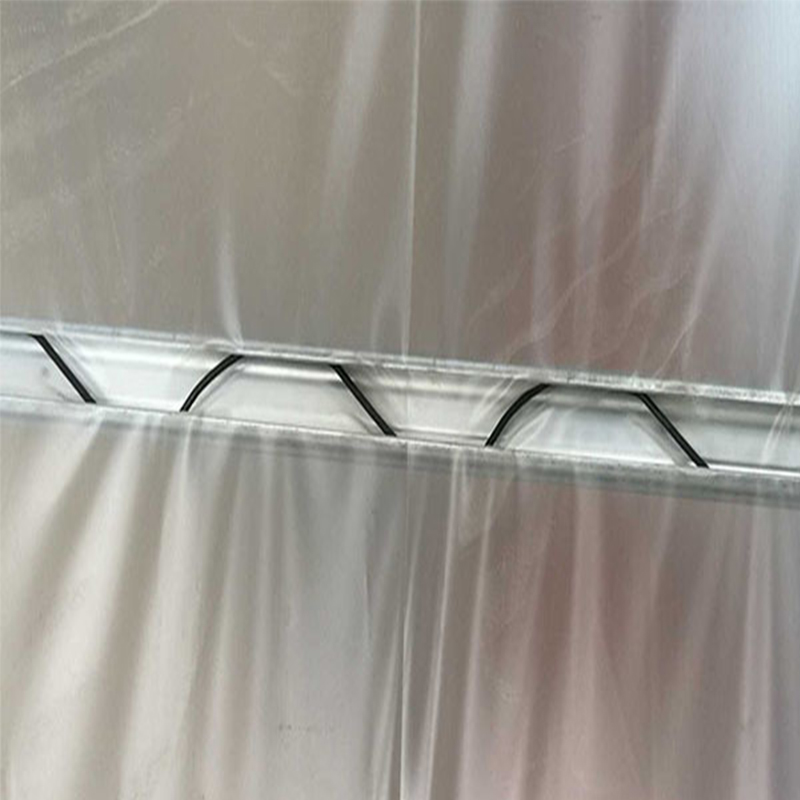
Wiggle wires hold in place a clear greenhouse polythene sheet tucked in a profile
VII. Screws
The join the profiles to the galvanised steel structure
VIII. Concrete
This is what supports the galvanised steel structures on the ground and keeps them upright
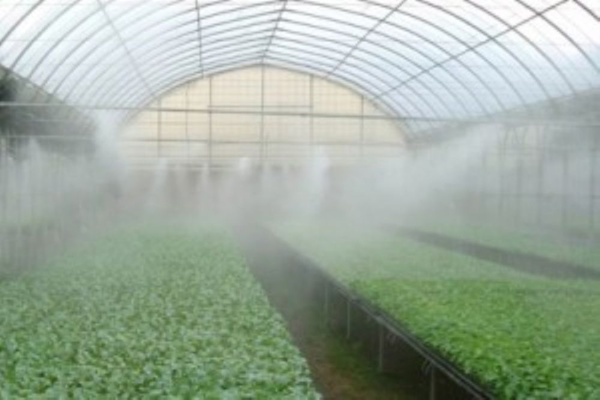
Humidification through misters in a seedlings propagation greenhouse
Successful greenhouse farmers in Kenya grow both none food and food crops in our metallic greenhouses. Common greenhouse food crops are; tomato, peppers, strawberries, and cucumber. Galvanised steel bars, insect netting, screws, and profiles are our greenhouse construction materials. With labor addition, all now constitute your final greenhouse cost Every Grekkon Limited greenhouse has a drip irrigation system for crop production, or a misting/ fogging system for seedlings propagation. Sprinkler irrigation systems are not installed in greenhouses
Greenhouse Sizes In Kenya
FAQs
1.What is greenhouse farming?
2. What is the most profitable crop to grow in a greenhouse?
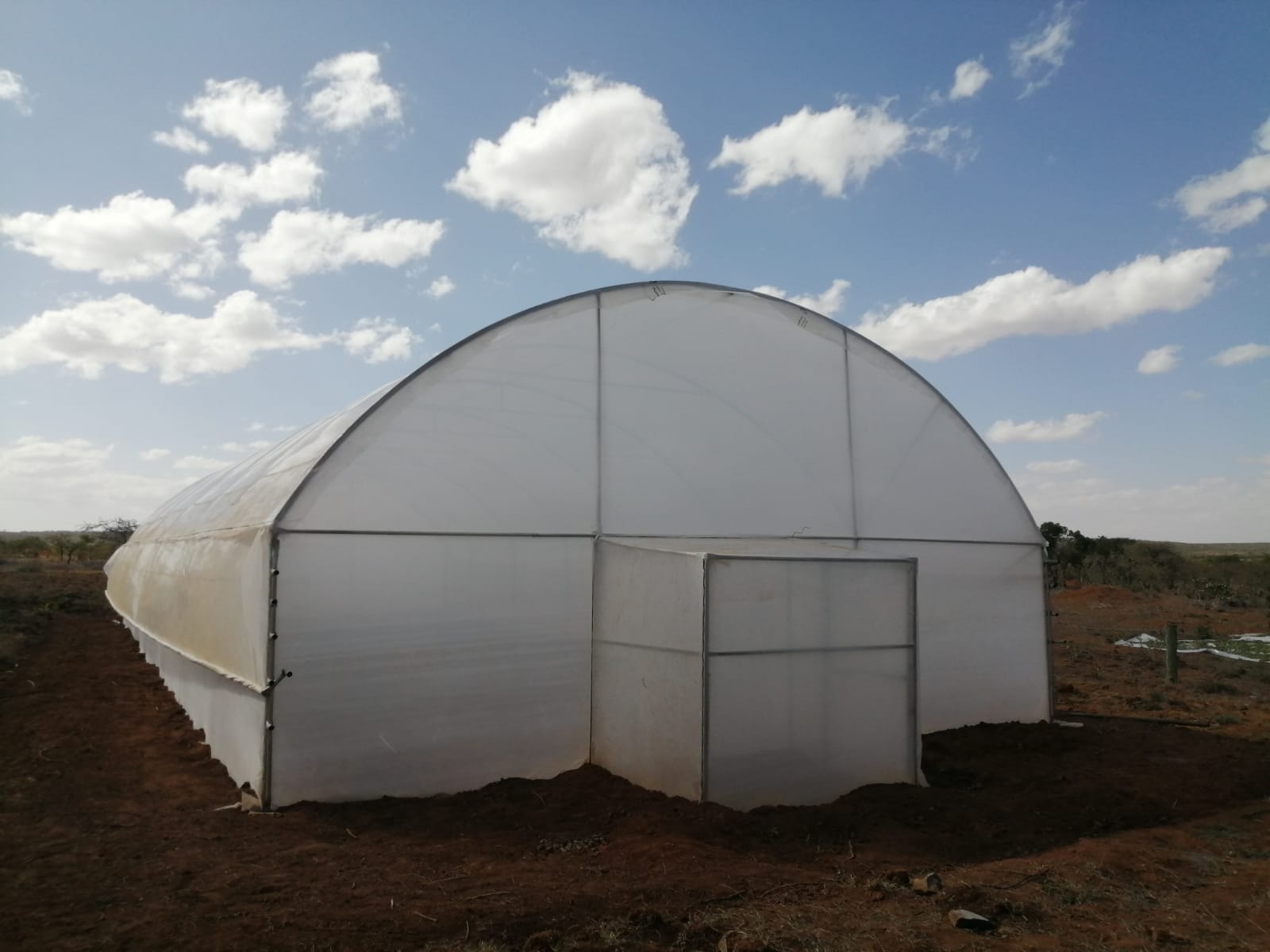
A 30M x 8M tunnel type greenhouse by Grekkon Limited in Rimuruti area, Laikipia county. Notice the front sanitary pouch, and side roll up
3. How profitable is greenhouse farming in Kenya?
Greenhouse farming consists of self-pollinating crops such as greenhouse indeterminate tomatoes, peppers, and cucumbers, and also insect-pollinated crops like strawberries. These are high-value crops that require intense attention and protection from pestilences such as; hail, drought, pest, disease, storms, and cold. They are moderately profitable. We design none food metallic greenhouses for flowers such as; roses, carnations, and chrysanthemums, and herbs such as geraniums, mint, basil, rosemary, and lemongrass. These crops are highly profitable and are grown by successful greenhouse farmers in Kenya.
4. How do you build a greenhouse?
Greenhouse farming in cool highland zones will have a tunnel-type greenhouse constructed because it conserves heat, while those in the warm lowlands will have a vented type greenhouse that allows better cooling. The difference between the two greenhouse types is that the vented type has a roof top ventilation. This is created by overlapping one side of the roof above the other (see the wooden greenhouse image below) Our sizes range are small, medium and large
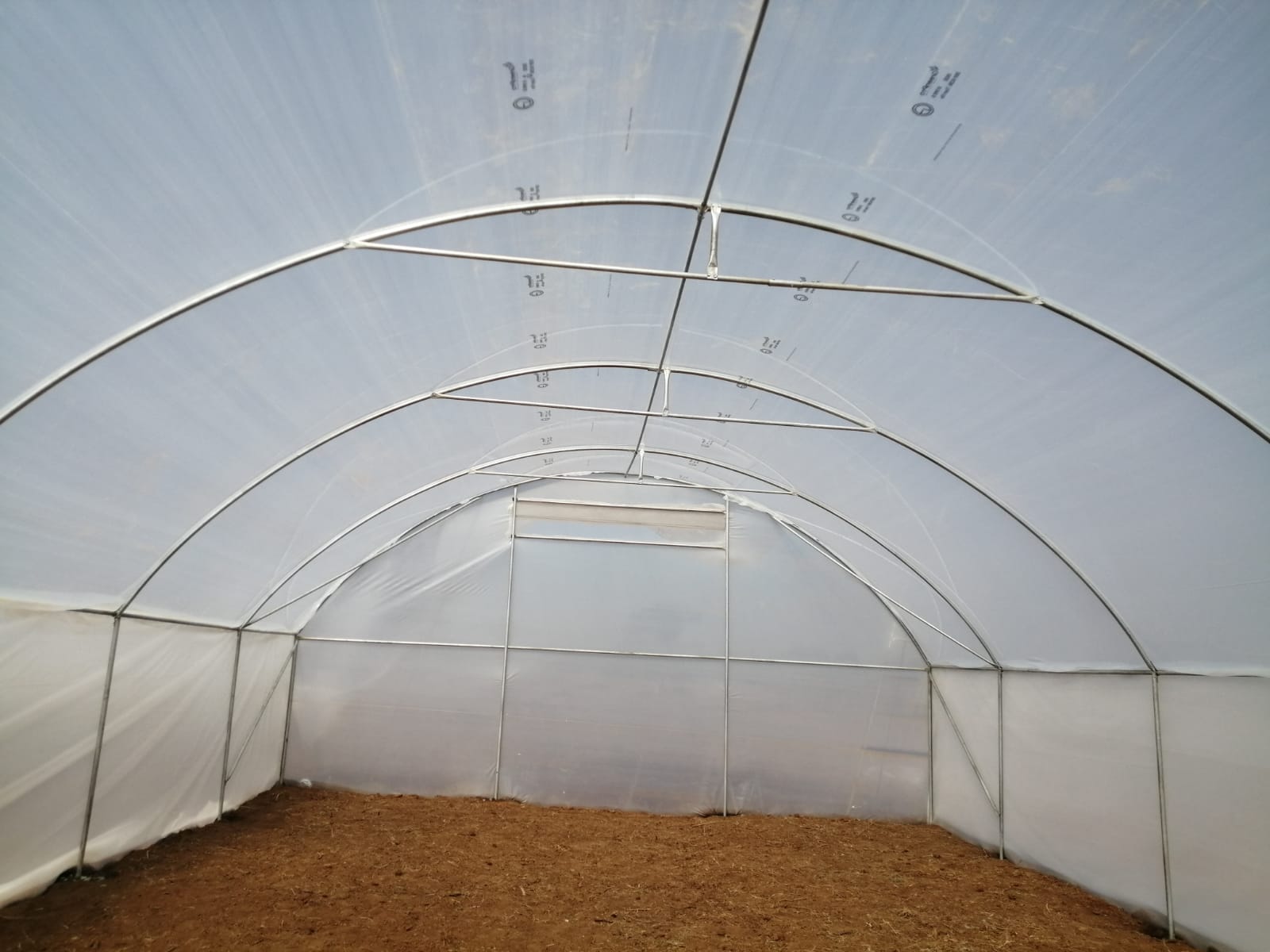
The interior of the tunnel type greenhouse
6.How thick does the plastic need to be for a greenhouse?
It will be 200 to 220 microns. Our greenhouse polythene price in Kenya is Kes 96/MSQ7. What is the best covering for a greenhouse?
8. Are greenhouse tomatoes better than outdoor tomatoes?
Greenhouse tomatoes have less pesticide applied to them because the crop is protected. Greenhouse tomato farming prevents high pests and diseases outbreak. These tomatoes have a lower shelf life than open field tomatoes because their rind is softer than open field tomato. Complete exposure to the sun is what gives open field tomato tougher rind, assuming the same level of nutrition for both. To increase the shelf life of greenhouse tomato, calcium and boron feeding is necessary
9. How well can a small-scale farmer run a greenhouse?
Grekkon Limited has developed manuals to assist small-scale farmers to achieve high yields in their greenhouses. We also conduct crop assessment visits during the first 4 months of production, free of charge. The reason we make it 4 months is because by this time, the crop has been harvetsed severally and the farmer knows all the basics of production
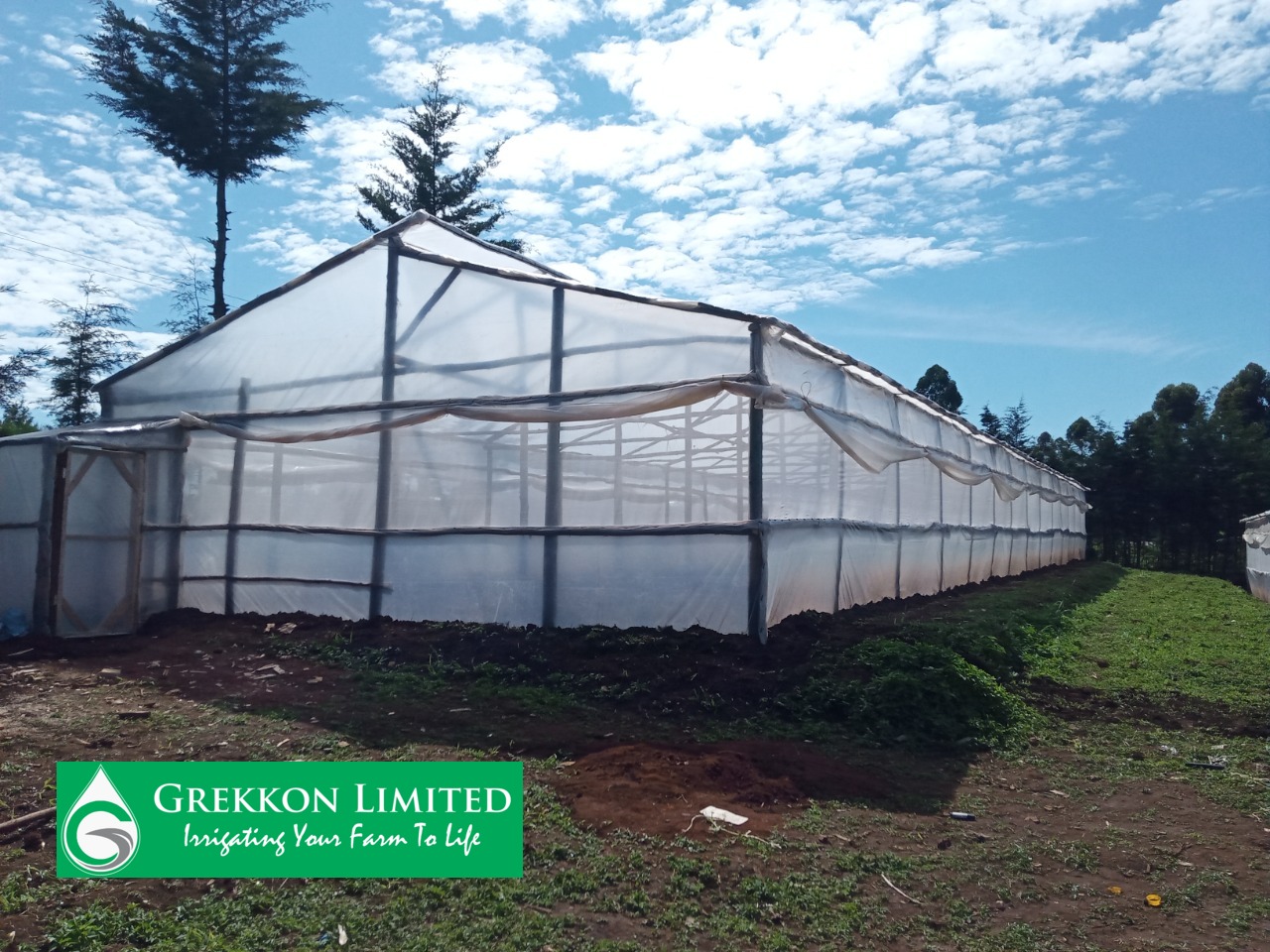 A low cost vented type wooden greenhouse in Kenya by Grekkon Limited
A low cost vented type wooden greenhouse in Kenya by Grekkon LimitedGreenhouse Sizes In Kenya
How profitable is greenhouse farming in Kenya?
How to get high yields in your greenhouse farming
1. Soil test
Conduct a soil test to determine the right fertiliser regime. A soil test will be done in a soil testing laboratory after soil samples are collected from the site.
2. Nutrition
Before making your beds, trench to 2 feet and add manure mixed with soil and ash then do your bed over this trench. This will feed your indeterminate crop for many months, providing consistent productivity
3. Water usage
Drip irrigation is the method of watering your greenhouses. Tomato farming, strawberry farming, pepper farming, herbs farming, cucumber farming, and for every crop in the greenhouse.
4. Crops to grow
Indeterminate vegetable crops like; tomato, cucumber, strawberries herbs, and peppers. This is because the yield over a prolonged period of time, which is key in returning the greenhouse investment
5. Pests and diseases
Greenhouses reduce the incidence of pests and diseases because the crop is under a protective greenhouse cover
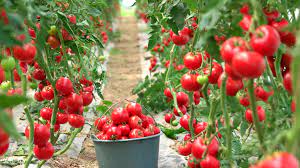
Ripe greenhouse tomato fruit

Ripe open field tomato fruits
Greenhouse Sizes In Kenya
Summary
For your greenhouse investment in Kenya, we provide a kit for an additional cost that consists of;
- Seedling trays
- Coco peat
- Fertiliser (planting and topdressing)
- Pesticides; insecticides (long and short PHI), and fungicides (preventive and curative)
- Personal protective equipment
- goggles
- gas mask
- overalls
- gloves
- gumboots)
- A 20-liter knapsack sprayer
This secures your greenhouse budget. Our technical team is at hand to guide growers on the best greenhouse cost and sizes based on; crop type, location, and budget.
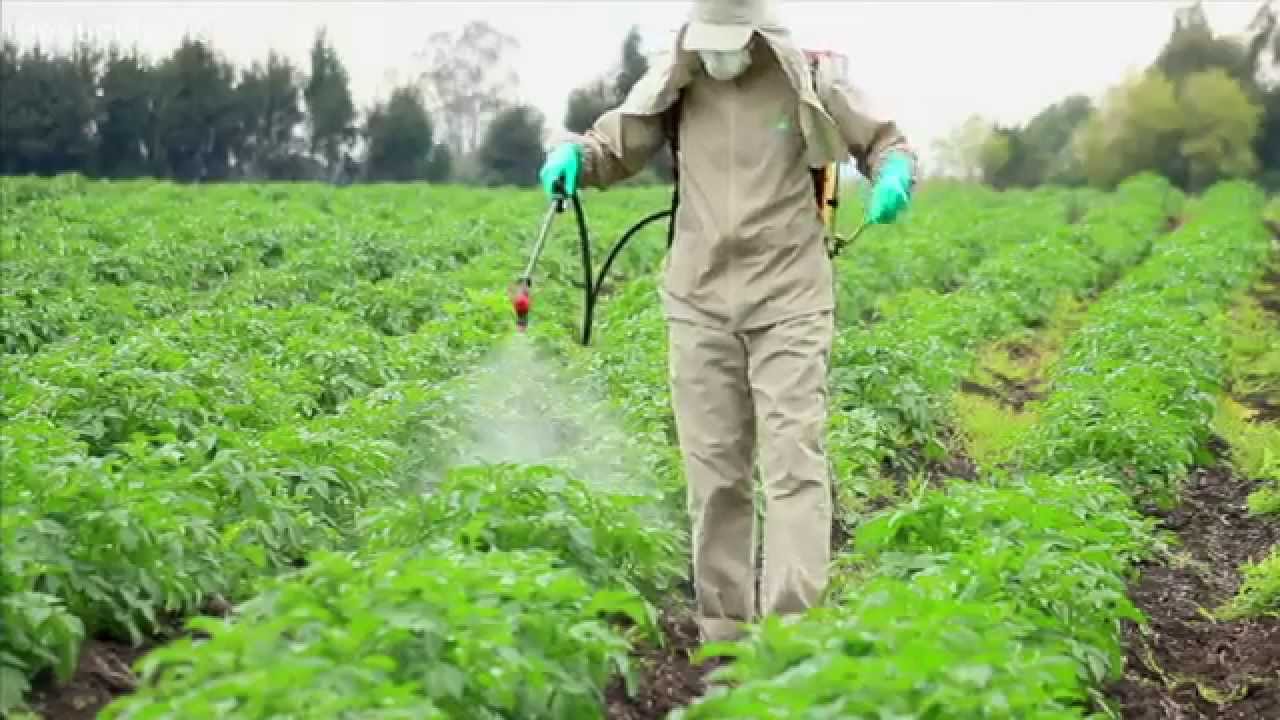
Spraying agrochemicals on a young open field tomato crop donning the full PPE kit
Related Posts
Greenhouse Construction In Kenya
Greenhouse construction in Kenya vary from small units of 120M sq, to large commercial units occupying ten of acres. The table below...

Greenhouse Paper In Kenya
Grekkon Limited's greenhouse paper in Kenya is of various rent characteristics. These characteristics determine it's overall performance on...
